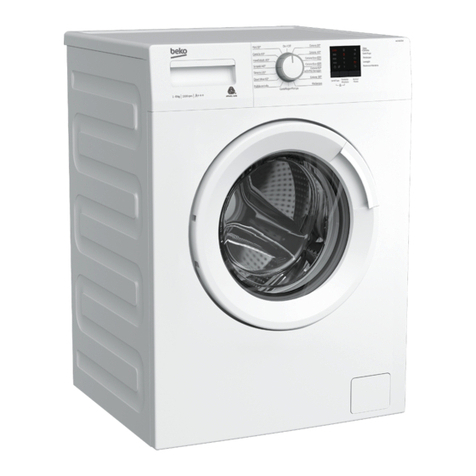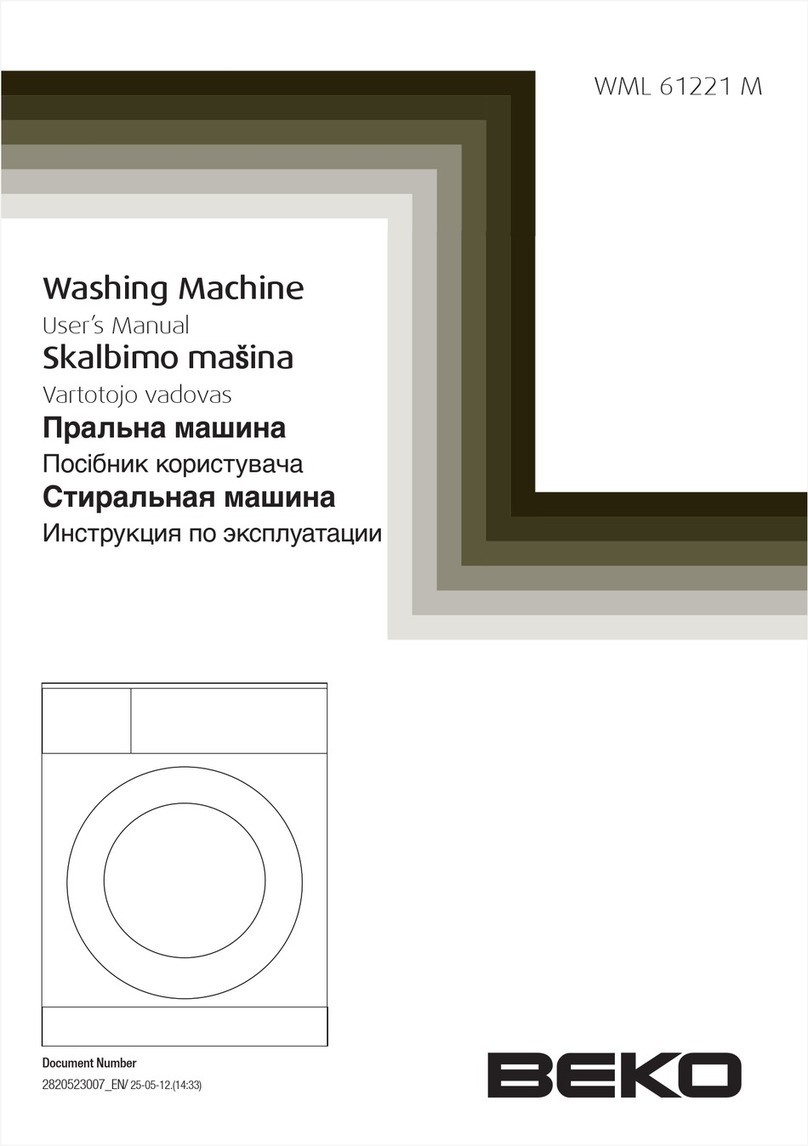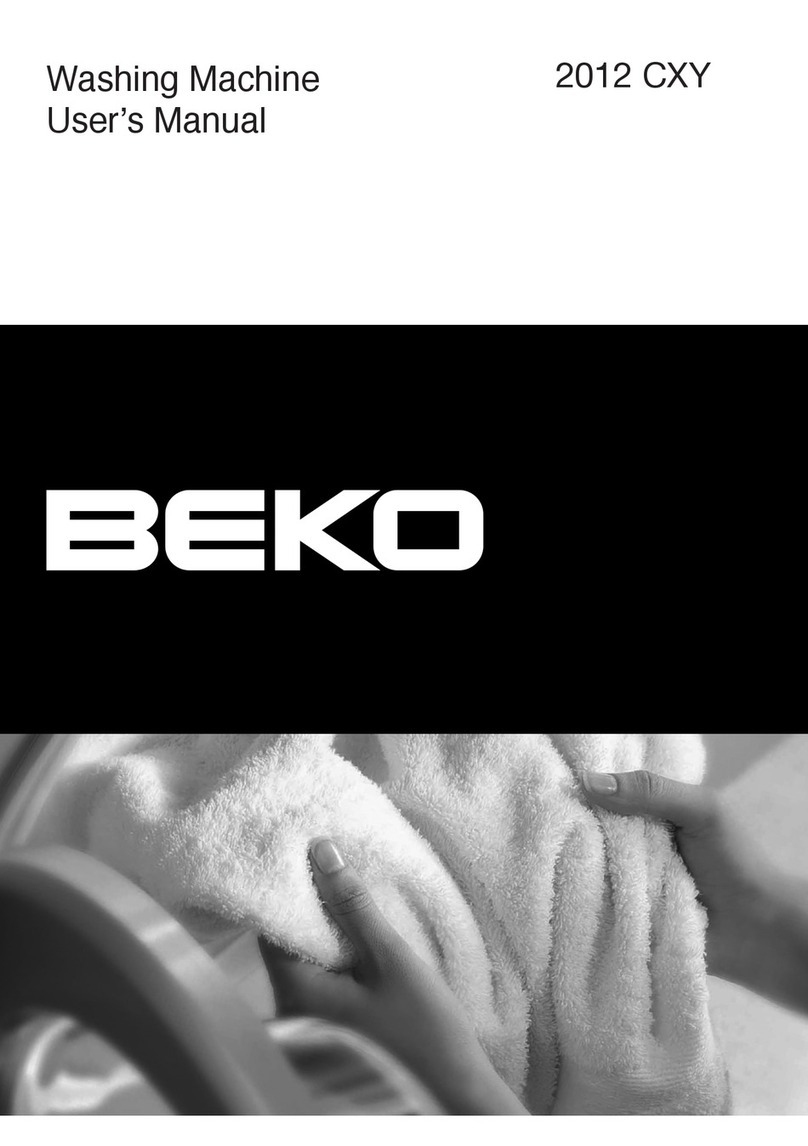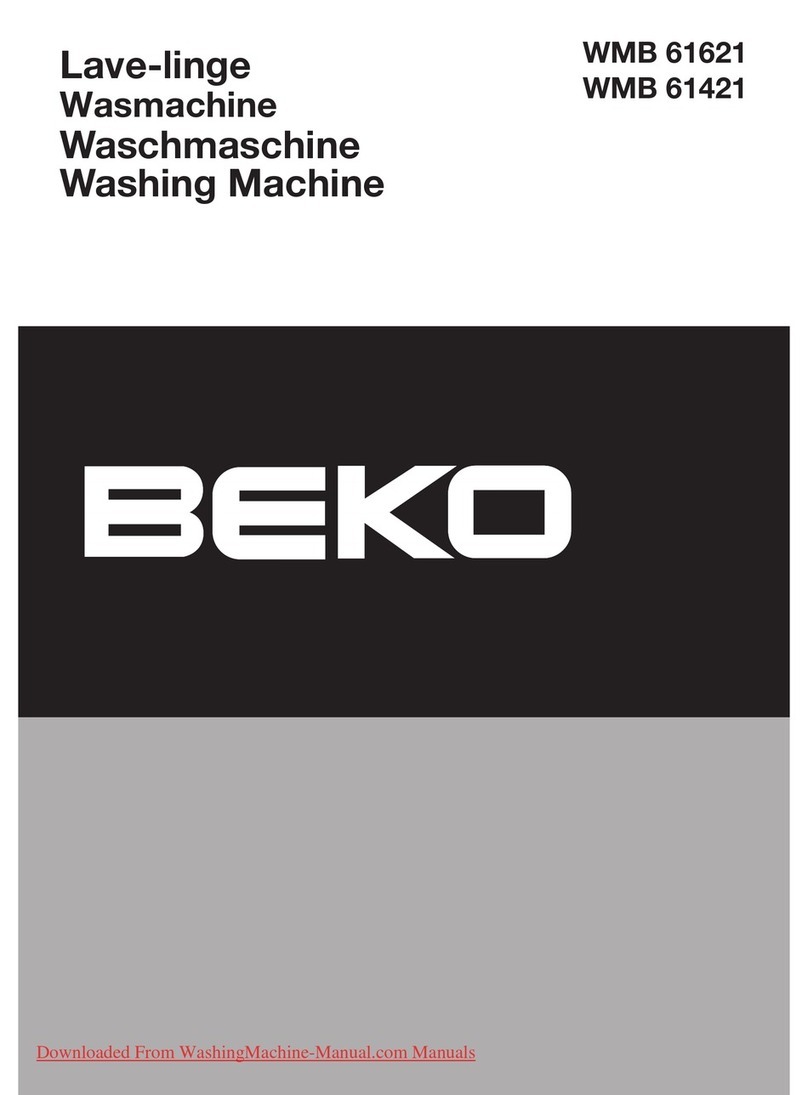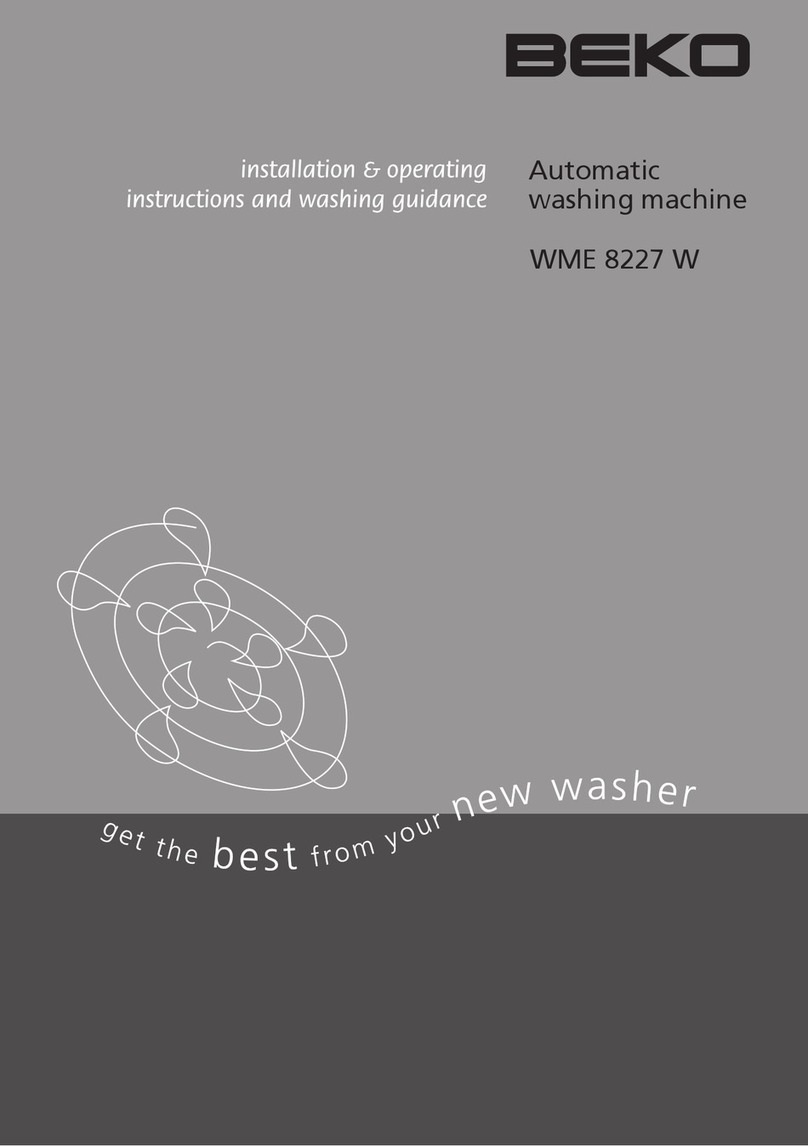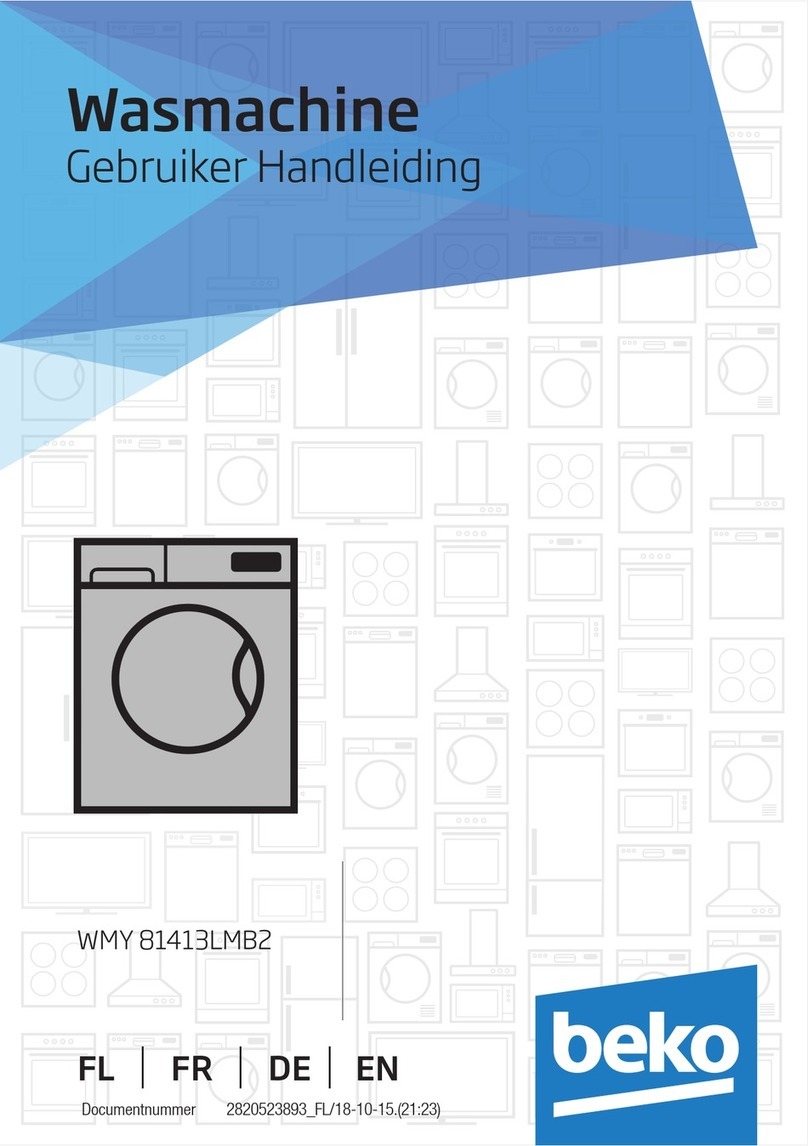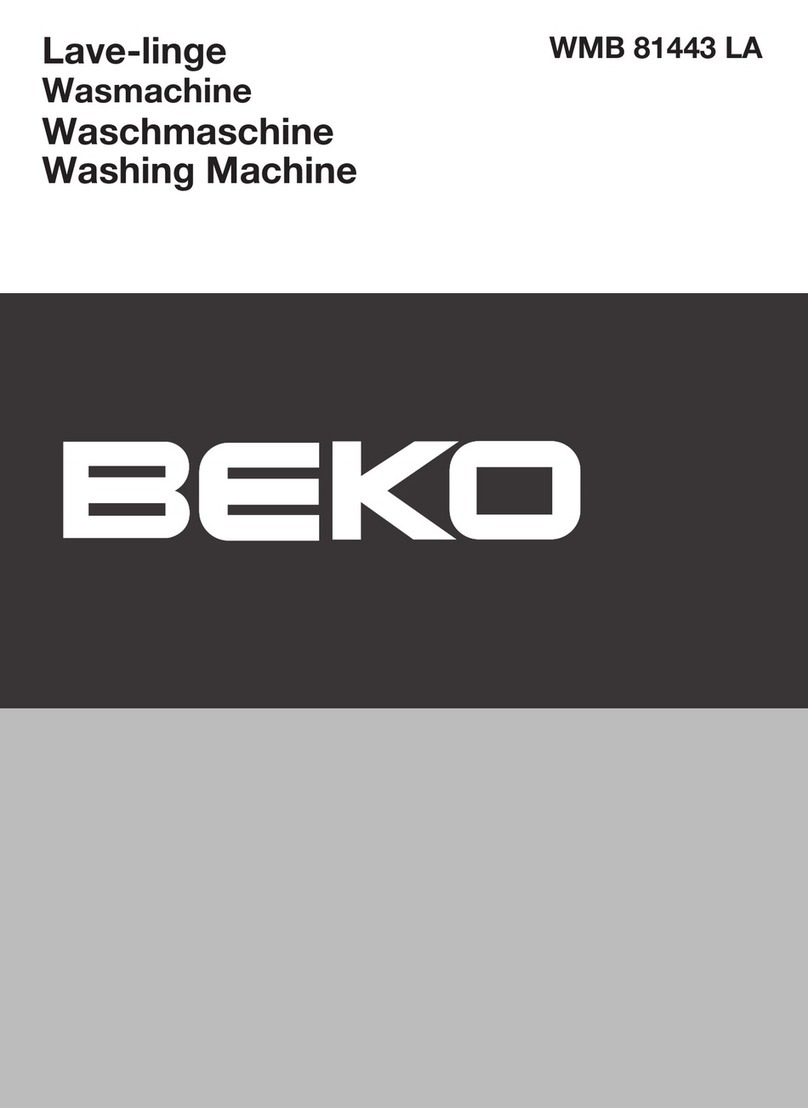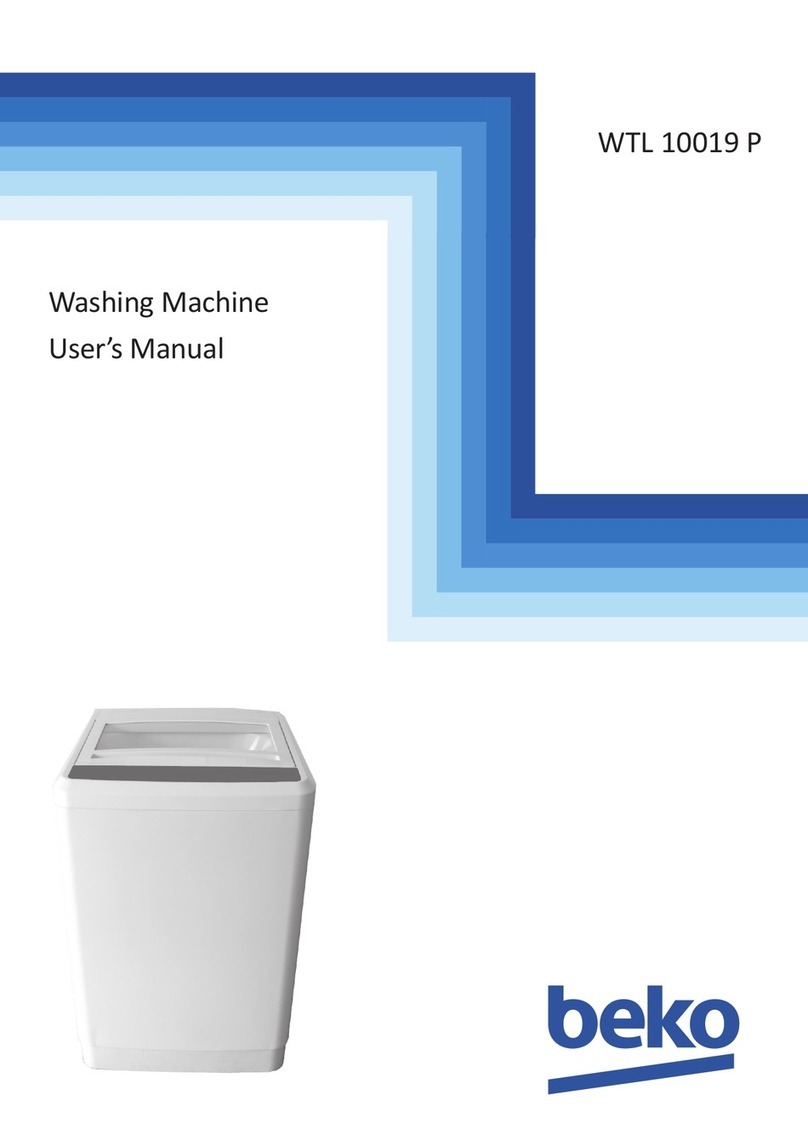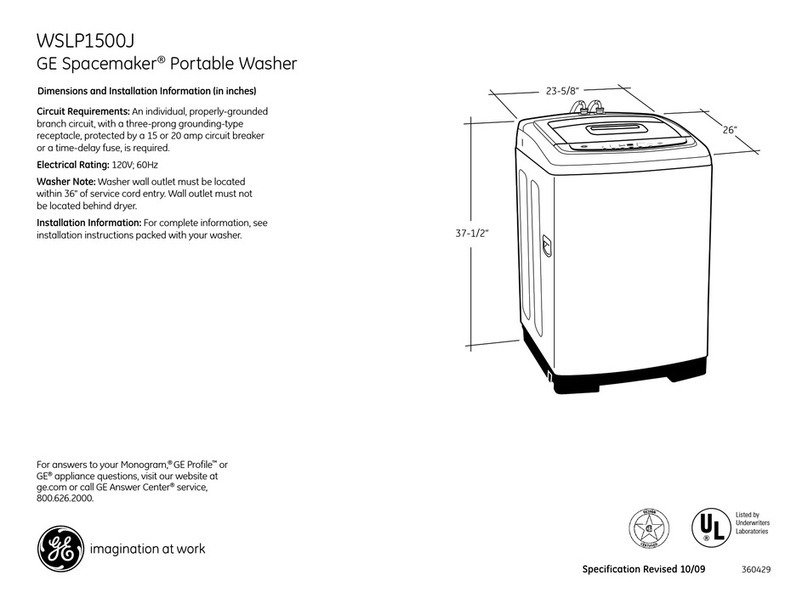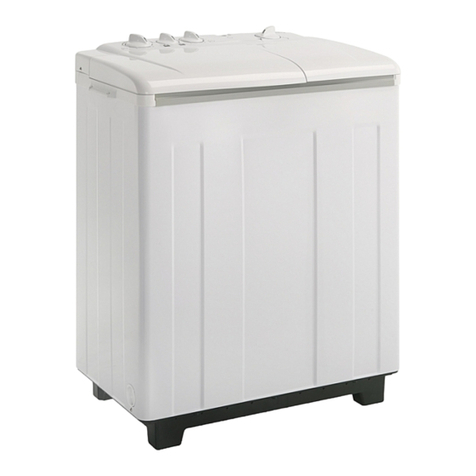
remain in an undamaged state.
• Fitthedraininghosetoawashbasin
or waste system securely before
starting up your machine. There may
be a risk of being scalded due to
high washing temperatures!
• Neveropenthedoororremovethe
filter while there is still water in the
drum.Otherwise,theremaybethe
risk of flooding and possible injury
due to the hot water.
• Neverforceopenthelockeddoor!
The door will be ready to open just a
few minutes after the washing cycle
comes to an end.
• Unplugthemachinewhenitisnotin
use.
• Neverwashdowntheappliance
with a water hose! There is the risk
of electric shock! Always disconnect
from the mains by unplugging before
cleaning.
• Nevertouchtheplugwithwet
hands. Never unplug by pulling
on the cable, always pull out from
the plug only. Do not operate the
machine if the power cord or plug is
damaged.
• Neverattempttorepairthemachine
yourself.Otherwise,youmaybe
putting yours and other’s lives in
danger.
• Formalfunctionsthatcannot
be solved by information in the
operatingmanual:
Turn off the machine, unplug it, turn
off the water tap and contact an
authorized service agent.
If there are children in your
house...
• Electricalappliancesmaybe
dangerousforthechildren.Keep
children away from the machine
when it is operating. Do not let them
tamper with the machine.
• Closethedoorwhenyouleavethe
area where the machine is located.
• Storealldetergentsinasafeplace
out of reach of the children.
Electrical connection
Makesurethatyouhaveanearthed
power outlet socket rated at 13 amps
(minimum).
Attention!
If you use your machine as built-in,
the socket must be reachable after
installation,oraseparateswitch(which
candisconnectthetwopoles)mustbe
used in the installation.
Connect the power cord to the
appropriate electrical socket with an
equivalent current rating indicated on the
rating plate at the front of the machine
behind the kick plate.
After removing the plug from its transit
position, please insert the plug seal
to prevent water spillage entering the
machine.
Electrical requirements
Before you insert the plug into the wall
socket make sure that the voltage and
the frequency shown in the rating label
corresponds to your electricity supply.
We recommend that this appliance be
connected to the mains supply via a
suitable switched and fused socket in a
readily accessible position.
Should the mains lead of the appliance
become damaged or need replacing
at any time, it must be replaced by a
special purpose made mains lead which
can only be obtained from a Authorised
Service Agent.
B This appliance must be earthed
If the fitted moulded plug is not suitable
for your socket, then the plug should be
cut off and an appropriate plug fitted.
Destroy the old plug, which is cut off as
a plug with a bared cord could cause a
shock hazard if inserted into a socket
elsewhere in the house.
The moulded plug on this appliance
incorporates a 13A fuse. Should the fuse
need to be replaced an ASTA approved
BS1362 fuse of the same rating must
be used. Do not forget to refit the fuse
cover. In the event of losing the fuse




